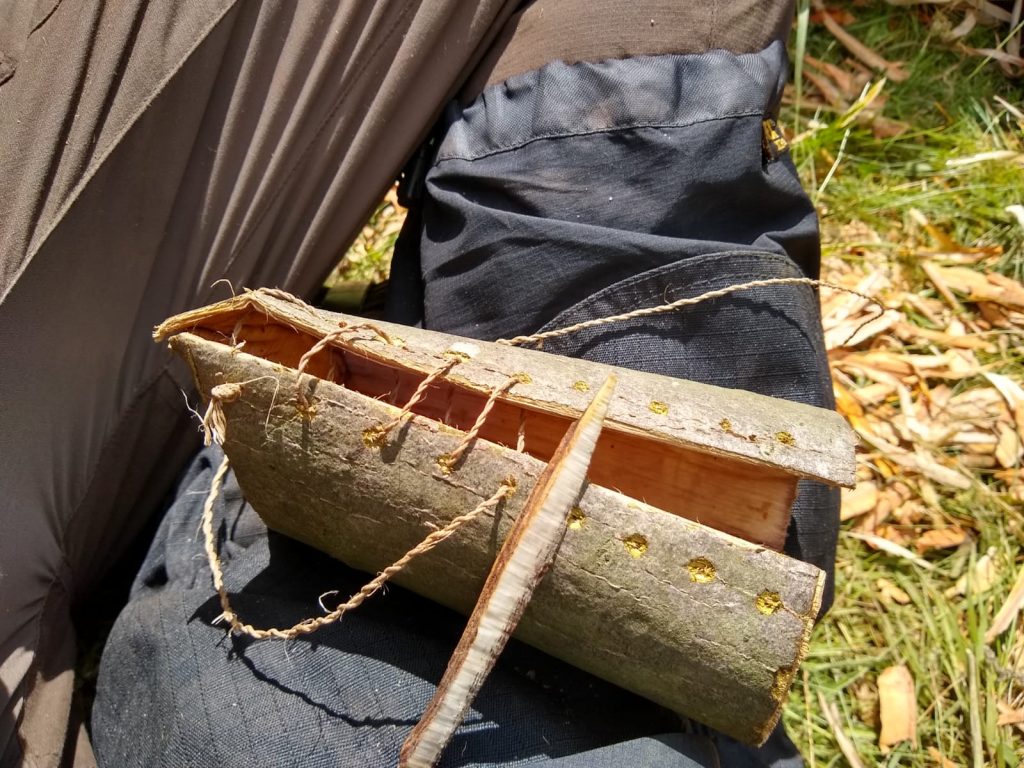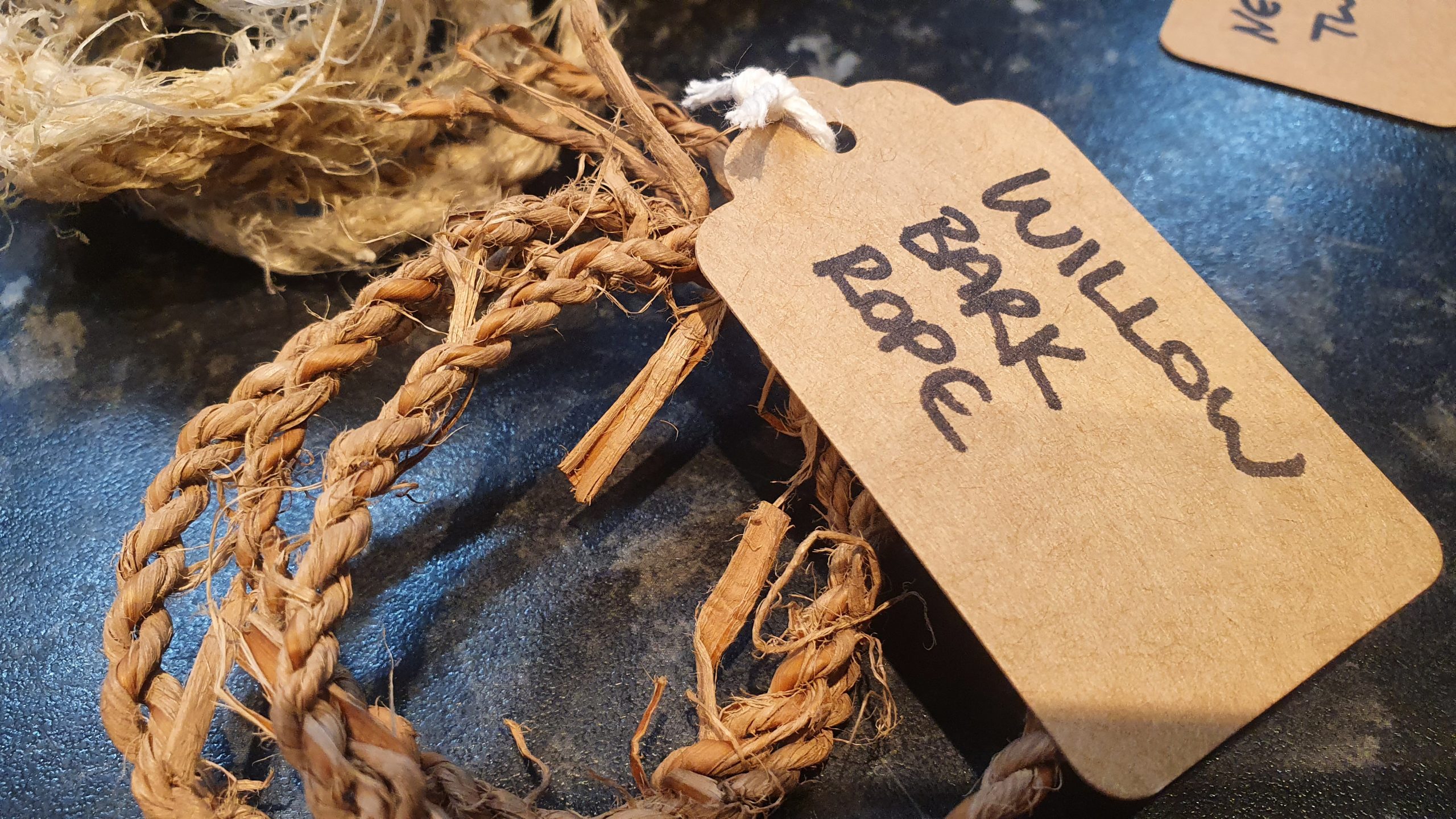Containers are one of the four or five absolutely key items for survival; mostly because without a container for water, you are going to be in trouble. Even if you ignore water, containers are necessary for storage of many sorts, particularly the seed and grains that will keep you alive through the winter.

The easiest primitive water container is a hollowed log – the hollow could be chopped out or burned in, or a combination of those methods. You can throw heated rocks in that water to boil it. However, this is a heavy and immobile container; something to transport water from a river or pond would still be necessary in most situations.

A bark container could be made and folded, though this is quite tricky. Stitching a container with natural cordage (see below) and glueing with natural glue (see above) is the most skilled option. Folding a bark container before waterproofing it with natural glue is a valid alternative method.
To fold, you can thin the bark, or even cut it, at the corners, before folding it like the corner of a Christmas present. A peg made from a split piece of green wood can pin it in place.

There are lots of possible designs; they are all intricate and fiddly. Personally, I’ve had the best results from making a template of interlocking triangles on both short sides of a rectangle, bringing them together, supporting with wooden disks for base and lid, and using birch tar on the seam. Stitching could potentially work even better, but requires the making of string and the punching of small holes in the bark – which is easier said than done with just your knife.
For the container design where you fold and stitch, scouring the oval at the base. You want a much bigger piece of bark than you think. Sweet chestnut is good, as are birch and willow, though all feel different and require different techniques. The stitches need to be strong and tight, pulling the container together, and starting at the bottom (because you will not be able to stitch the bottom if you do it last). If you get it tight enough, you will be able to use glue to waterproof, and off you go.





Leave a Reply